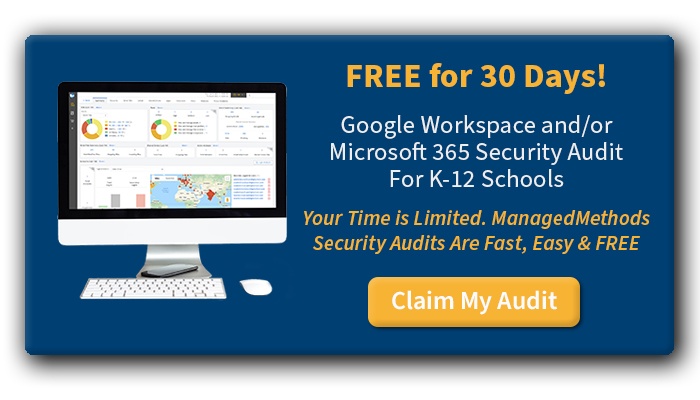This article was originally published on EdTech Digest on 3.5.24 by Charlie Sander, CEO at ManagedMethods.
Like it or not, students give and receive a huge amount of data.
Whether we like it or not, the modern education system requires that students give and receive a huge amount of data. To some extent, it helps their teachers to better understand them—from their grades to educative resources, a comprehensive database is essential nowadays.
Unfortunately, while a system like this allows educators to access data remotely, the nature of a server being accessed in so many different locations with few security measures makes it very vulnerable to cyberattacks. Furthermore, the number of edtech products schools access in a typical month has tripled in the last four years to more than 2,591 tools, according to a recent estimate by Learn Platform. With all these different apps collecting and storing personal data, there is so much more valuable information for criminals to steal and profit from.
With that in mind, let’s dive into the data privacy landscape in schools and then discuss how to keep data privacy top of mind to safeguard students.
Risks to Student Data Privacy
As we mentioned above, schools store vast amounts of sensitive information about their students. Names, addresses, academic records, and medical records are all stored, which provides a goldmine for hackers circling like vultures. Additionally, many schools still operate with ‘traditional rostering’, which involves relying on basic scheduling software or spreadsheets. This provides added risk by potentially copying huge amounts of data between each edtech roster contracted to a school.
Malicious actors could attempt to gain access in a variety of ways, mostly for financial gain. When they infiltrate networks through methods such as malware, ransomware, phishing, and spoofing they can steal information and sell it to interested parties, or even blackmail schools and parents…

